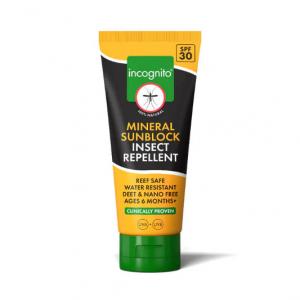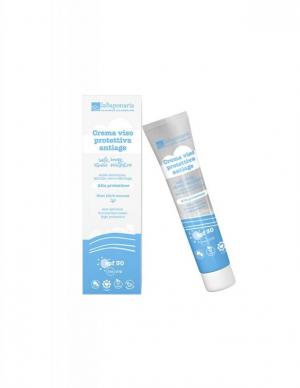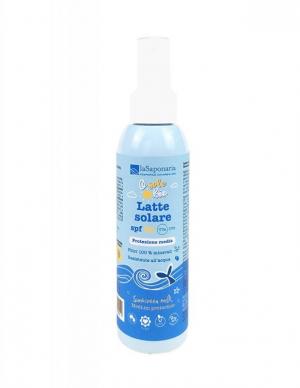
Practical Tips for Managing Symptoms of Sun Allergy

How to Recognize, Treat, and Effectively Prevent Symptoms of Sun Allergy
Warm summer days entice many of us to spend as much time as possible outdoors under the open sky. Sunlight not only offers energy and improves mood but also contributes to the production of vitamin D, which is crucial for the proper functioning of our body. However, for certain individuals, being in the sun can be a source of health problems. Sun allergy is one of the most common issues associated with excessive exposure to sunlight, and its symptoms can be not only unpleasant but also significantly limiting.
What is Sun Allergy and Why Does it Occur?
Sun allergy, scientifically known as polymorphic light eruption, represents an abnormal immune system reaction to ultraviolet (UV) radiation. This reaction most frequently occurs in spring and summer when the intensity of sunlight is highest. People with this type of allergy may experience various skin reactions after just a few minutes of sun exposure. Typical symptoms of sun allergy include itching, rash, blisters, and skin redness.
The exact mechanism of sun allergy is still a mystery. It is believed that UV radiation causes changes in skin cells, leading to an immune response where the body starts attacking its own cells. This reaction is primarily triggered by UV-A radiation, which penetrates deeper layers of the skin, but in some people, the reaction may also be triggered by UV-B radiation.
Who is Most Susceptible to Sun Allergy?
Sun allergy most commonly occurs in people with sensitive skin but can affect anyone regardless of age or gender. There are certain risk factors that may increase the likelihood of its development. These include genetic predisposition, fair skin phototype, and previous exposure of the skin to intense sunlight without adequate protection. Many people also notice that their skin reacts more sensitively to the sun after using certain cosmetic products or medications, such as antibiotics or hormonal contraceptives. These substances can increase the skin's sensitivity to UV radiation, leading to the development of sun allergy.
How to Recognize Sun Allergy?
Symptoms of sun allergy can appear just a few minutes or hours after sun exposure and may persist for several days. Typical manifestations include:
- Itching and Burning – The skin may feel hot to the touch and intensely itch, increasing discomfort.
- Rash – Small red bumps or spots that can cluster into larger areas. These rashes often occur on the neck, face, shoulders, arms, and other areas directly exposed to the sun.
- Blisters – In more severe cases, small blisters filled with fluid may appear, which can burst and leave the skin irritated.
- Redness and Swelling – Areas affected by sun allergy are often red and may slightly swell.
The manifestations of sun allergy can vary depending on the individual's sensitivity. Some people experience mild symptoms that occur only occasionally, while others may have very severe reactions that significantly affect their quality of life.
How to Protect the Skin from the Sun?
Even though sun allergy can be unpleasant, there are several steps that can help reduce the risk of its occurrence or alleviate its symptoms.
Gradual Sun Exposure: One of the most effective ways to prevent sun allergy is gradual sun exposure in spring. Initially, spend only short periods in the sun and gradually extend these intervals. This process allows the skin to gradually adapt to UV radiation and reduces the risk of an allergic reaction.
Use of Sunscreens with High SPF: Protective creams with SPF (Sun Protection Factor) are essential for protecting the skin from the harmful effects of sunlight. It is recommended to use creams with at least SPF 30, even on an ordinary day outdoors. When choosing a sunscreen, also consider protection against UV-A and UV-B radiation.
Try our natural products
Protective Clothing: If you know you will be exposed to direct sunlight for an extended period, choose light but protective clothing. Long sleeves, wide-brimmed hats, and sunglasses can be an effective barrier between your skin and the sun's rays.
Limit Sun Exposure During Risky Hours: UV radiation is strongest between 10 AM and 4 PM, when the sun is highest in the sky. If possible, avoid being in direct sunlight during this time.
How to Treat Sun Allergy?
If you still develop sun allergy, there are ways to alleviate its symptoms and speed up skin healing. The first step is to avoid further sun exposure to prevent worsening of the condition. You can then choose some of the following measures:
- Cooling Compresses and Gels – Using cooling compresses or gels containing aloe vera can soothe irritated skin and reduce itching.
- Antihistamines – Over-the-counter antihistamines can help relieve itching and swelling associated with the allergic reaction.
- Corticosteroids – In more severe cases, it may be necessary to use creams containing corticosteroids to reduce inflammation. It is always good to consult these products with a doctor.
In the case of recurring and severe manifestations of sun allergy, it is advisable to visit a dermatologist who can recommend further treatment procedures. They may also advise on a process called phototherapy, where the skin is gradually exposed to UV radiation under professional supervision to get used to the sun's rays and reduce sensitivity.
Sun allergy can be frustrating, but with appropriate preventive measures and timely treatment, it is possible to minimize its impact on your daily life. The key is to pay attention to your skin and respond promptly to the first symptoms so you can fully enjoy sunny days without discomfort.





